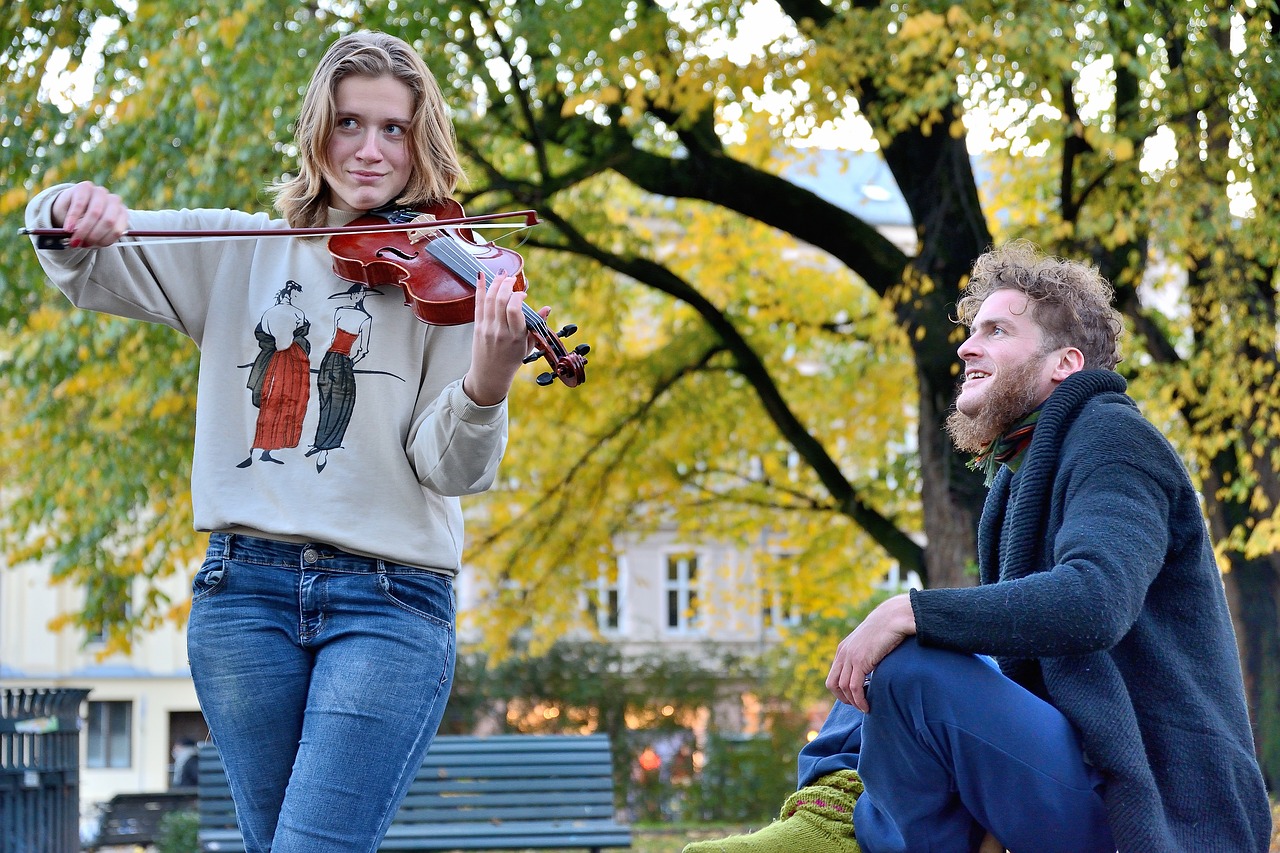
As in the rest of Scandinavian countries, the Norwegian folk music has its roots in medieval times. However, the first documented manifestations date from the mid-XNUMXth century. It is the music that, despite its undeniable Christian influence, is inspired by old pagan myths from the time of the Vikings.
This music, described as simple and joyous, had no other purpose than entertainment and dancing. And although at some point it went out of style and was on the verge of disappearing, it is currently experiencing a new golden age. The reason: the new generations have regained their interest in history of Norway and its old traditions.
Origins of Norwegian traditional music
The tradition of popular street musicians in the main cities of the country (Oslo, Bergen and Trondheim) dates back to the end of the Middle Ages. However, it is from the XNUMXth century when the main musical canons are established and the first great figures appear.
Georg von bertouch, johan daniel berlin y johan henrik berlin they are considered, among others, as the fathers of Norwegian folk music. Some of his cantatas or dance pieces are still performed today by young musicians who try to preserve and transmit this precious cultural legacy.
Norwegian folk music types
Norwegian folk music can be divided into two broad categories: instrumental music y vocal music.
Instrumental music
It is conceived above all to be danced. The Norwegian folk dances (known as slatter), They are dances that are performed in a group or in pairs. However, there is an individual dance modality called haling. The melodies that accompany these dances are usually compositions of two or three times.
The bygdedans, sometimes called Courtship dances, are linked to certain dates of the calendar especially marked as harvest or Christmas, but also to weddings, funerals and other celebrations.
Vocal music
This type of Norwegian folk music is the expression of two very different cultural traditions:
- La traditional sami music, known for a peculiar vocal style called yikes. Its sound is comparable to the traditional song of some cultures of the so-called First Nations of North America.
- La traditional music of Germanic roots is expressed through slow ballads (kwad) and animated songs, often improvised (Steve).
The choral tradition
In addition to these two folkloric currents, it is necessary to emphasize the importance of the choral music, even older than the previous two. Choirs, very widespread throughout the geography of this country, are one of the great hallmarks of Norwegians. The city of Violence, for example, with a population of barely 6.000 inhabitants, it has no less than 20 active choirs. Throughout the year there are numerous festivals and competitions that arouse great expectation and interest.
La Norwegian National Association of Folk Musicians, founded in 1923, has about 6.000 members and brings together more than a hundred local organizations.
Norwegian folk music instruments
The most typical instrument in Norwegian folk music is the violin. It is a special type of violin, with five parallel strings and less curved shapes: the Hardanger violin. This instrument was developed in the south of the country in the XNUMXth century.
The Hardanger is considered the Norwegian national instrument. It may be the evolution of an ancient Scandinavian instrument. It is distinguished by its intricate ornamentation and expressive sound. In the following video you can enjoy a wonderful sample of how this fabulous Norwegian violin sounds:
Usually the musical pieces are interpreted by a single violin. However, there are many other traditional Norwegian instruments that can accompany the solitas. Here are some of them:
- El buckhorn or goat horn.
- El harpeleik, a kind of zither.
- El lur, the traditional Scandinavian trumpet.
- La seljefloyte or willow flute.
- El flour house, similar to a clarinet.
Folk Music Week
The best way to discover and enjoy Norwegian folk music is to go to the folkemusikkveka (Norwegian Folk Music Week). This festival, which has been held since 1976, focuses on the musical aspect although it celebrates the culture of the country in all its forms in a broader way.
The headquarters of the folkemusikkveka is the town of Hallingdal, located about 100 kilometers northwest of the capital, Oslo. This small city is the great meeting point of all the great violinists nationwide. During this week, visitors can attend all kinds of musical shows, from evening concerts to dance competitions. It also offers an excellent opportunity to savor some of the great dishes of Scandinavian cuisine.